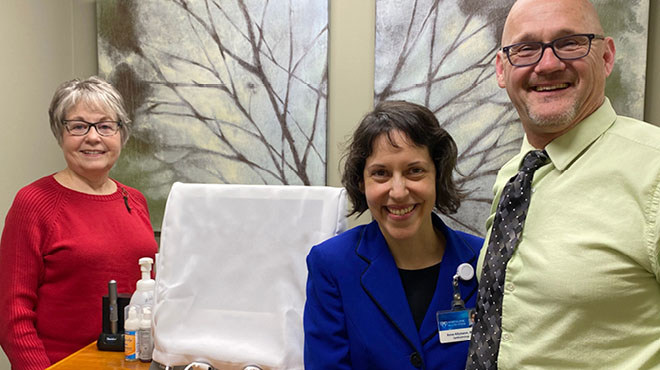Don’t be fooled by glaucoma — the silent sight thief

Glaucoma, sometimes called the silent thief of sight, is a group of eye conditions that damage the optic nerve, which is critical for good vision. This damage is often caused by an abnormally high pressure in the eye.
Glaucoma is one of the leading causes of blindness in the U.S. It can occur at any age but is more common in older adults. The most common form of glaucoma has no warning signs. You may notice patchy blind spots in your side or central vision. But the vision loss is often so gradual that you may not notice a change in vision until the condition is at an advanced stage.
Protect your sight
If you are 40 or older, or have a family history of glaucoma, you are at a higher risk of developing glaucoma. Many people with glaucoma do not realize they have the condition until they are seen for a routine exam.
You can help protect vision in you and your family members by getting a comprehensive dilated eye exam at least once every two years. During this exam, you will be screened for eye diseases, such as glaucoma. The dilated exam may show changes in the shape and color of the optic nerve fibers due to pressure. Lowering eye pressure in the early stages of glaucoma slows progression of the disease and helps save vision.
Secure your sight
While treatment for glaucoma cannot restore vision if it has already been lost, it can preserve remaining sight. Typically, many forms of glaucoma are first treated with daily eye drops or a laser procedure. The procedure is safe and performed in the office with no restrictions on activity by the day after the procedure. If eye drops or a laser procedure are not effective enough or cannot be tolerated, surgical procedures may be needed.
A new procedure called ab interno canaloplasty (ABiC) is a minimally invasive surgery to treat patients with glaucoma. Some ophthalmologists have advanced training in treating patients with eye diseases, such as glaucoma. During training, I learned to perform ABiC directly from the surgeon who invented the procedure.
During the procedure, a small catheter is used to flush out the part of the eye that drains pressure, resulting in lower eye pressure and better control of glaucoma. No stent or device is left behind in the eye after the procedure as they often are in traditional surgeries. The procedure has less risk of infection and quicker vision recovery than with traditional glaucoma procedures.
If your glaucoma cannot be controlled by eye drops or laser treatment, ABiC may be an option for you. In addition, if you are experiencing decreased vision due to cataracts, the procedure usually can be performed at the same time as cataract surgery with little added risk. Afterward, you may need fewer or no eye drops to treat your glaucoma.
Prevention of sight loss is a team effort
Treating glaucoma successfully is a team effort between you and your health care team. Share your concerns with your primary care provider, especially if you have a family history of glaucoma or other eye conditions.
Schedule your routine eye exam with an optometrist or ophthalmologist. If you are diagnosed with glaucoma, your care team will talk with you about your lifestyle and develop a treatment plan to protect you from the silent thief of sight.
Matthew Cooke, M.D., is an ophthalmologist in Eau Claire, Wisconsin.




